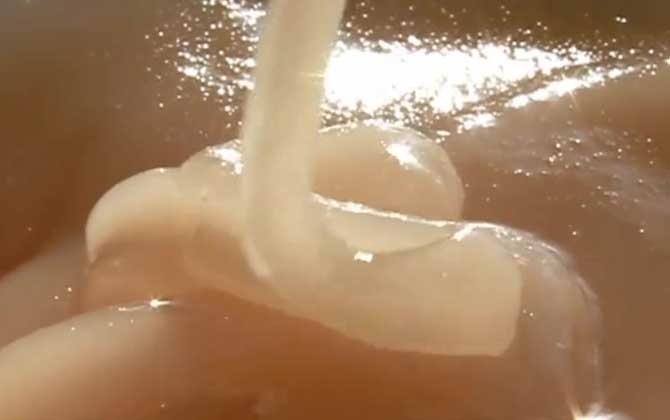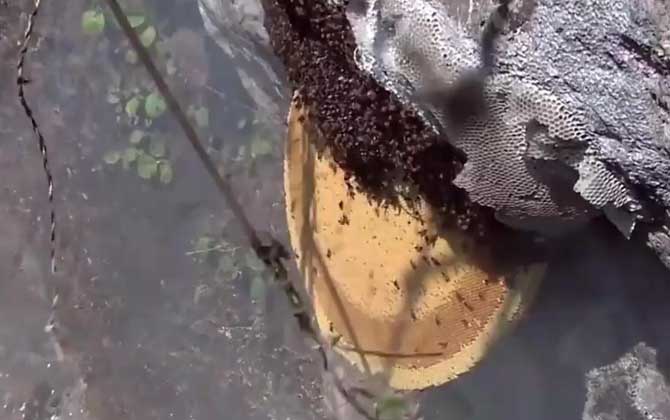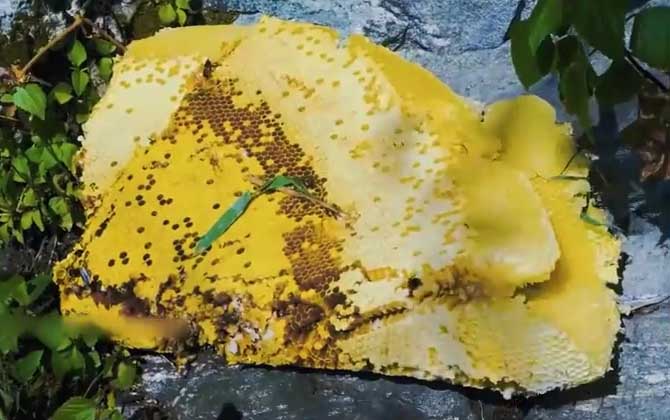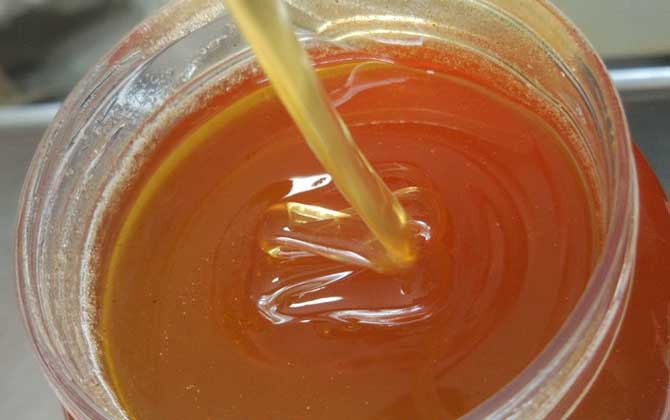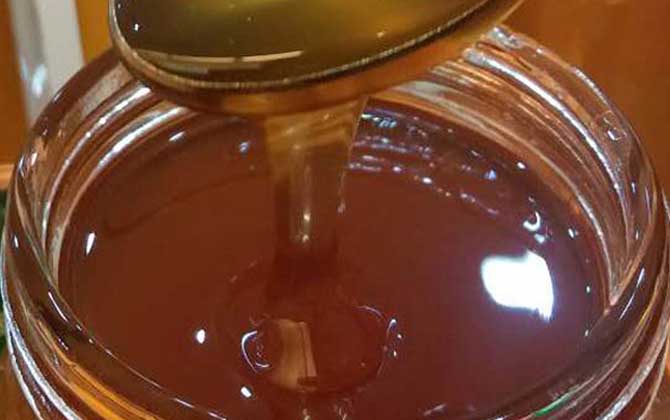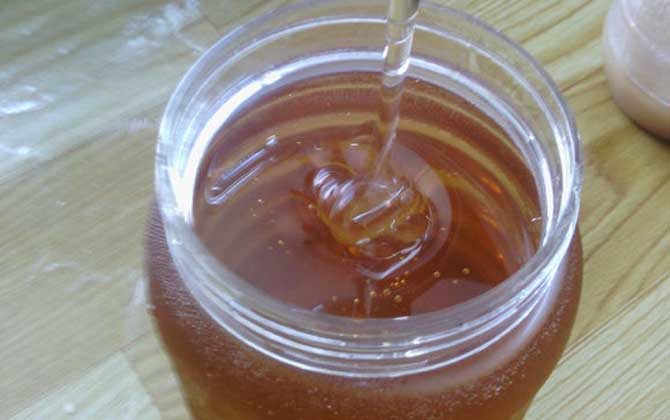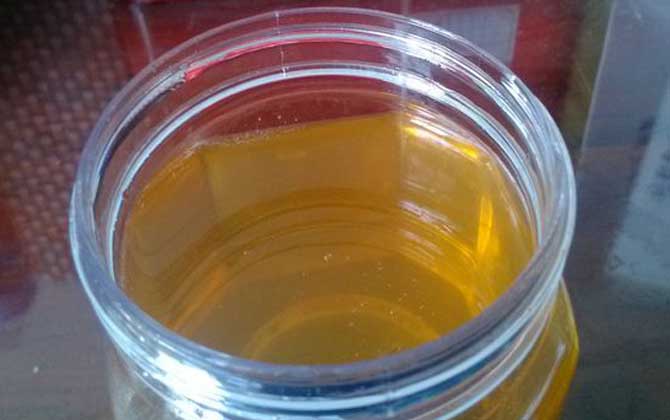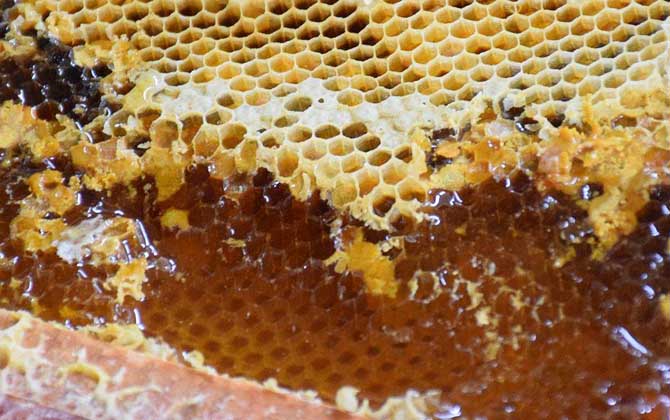What Is Black Honey? Definition, Key Sources, and Beekeeping Insights
2025-04-09
What is Black Honey? Honey is produced by bees collecting floral nectar. Depending on the variety of nectar sources, it can be categorized as monofloral honey or polyfloral honey. Varieties also differ by primary nectar sources – such as acacia honey, linden honey, or jujube honey – and by bee species used, including native honey, Italian bee honey, and black bee honey. Let’s explore the unique characteristics of black honey! 1. The Black Bee Species Black bees, one of the world’s “Four Great Bee Species,” have gradually declined due to their aggressive nature. Purebred black bees are nearly extinct in their native habitats. In China, two primary varieties exist: Xinjiang Black Bees and Northeast Black Bees. The Xinjiang strain adapted to local climate and flora, while the Northeast variety emerged from hybridization between black bees and Carniolan bees. Key Facts: Xinjiang Black Bees: Thrive in arid climates with diverse alpine flora. Northeast Black Bees: Cold-resistant hybrids with superior honey production. 2. Nectar Sources The composition of black honey varies significantly by region: Northeast Black Honey: Primary source: Tilia (linden trees), including: – Tilia amurensis (Amur linden): Blooms early to mid-July – Tilia mandshurica (Manchurian linden): Blooms mid to late July Xinjiang Black Honey: Features complex alpine flora nectar from: – Medicinal plants: Motherwort (Leonurus), fritillary bulbs (Fritillaria) – Aromatic herbs: Wild mint (Mentha), thyme (Thymus), licorice (Glycyrrhiza) – Over 100 mountain flower species 3. Nutritional Profile Black honey contains: Primary components: Glucose (30-35%) and fructose (38-43%) Secondary components: Sucrose (1-3%) 18 amino acids including proline and lysine Vitamins B complex, C, and K Minerals: Potassium, calcium, magnesium Unique features: Higher antioxidant content than regular honey 15+ active enzymes supporting digestion Antimicrobial phenolic compounds 4. Geographical Origins Xinjiang Black Honey: Produced in Ili, Tekes, Zhaosu, Huocheng, Xinyuan, Nileke, Gongliu, and Altai…
Stingless Bee Honey: Health Benefits, Uses, and Precautions
2025-04-09
What is Raft Honey? Raft honey is produced by “raft bees” through collecting plant nectar. The term “raft bee” is not an official scientific classification but a colloquial name for four specific bee species in certain regions: Giant Honey Bee (Apis dorsata), Black Giant Honey Bee (Apis laboriosa), Little Honey Bee (Apis florea), and Black Dwarf Honey Bee (Apis andreniformis). This unique honey variety has been traditionally valued for both nutritional and medicinal purposes. 1. Immune System Enhancement Raft honey boosts immunity through its rich composition: Minerals & Active Compounds: Stimulate immune cell proliferation Vitamins & Amino Acids: Enhance immune cell activity Monosaccharides & Organic Acids: Support healthy immune function Recent studies suggest regular consumption may reduce seasonal illness frequency by up to 30%. 2. Fatigue Relief This honey variety provides rapid energy replenishment: Contains over 70% glucose and fructose Direct bloodstream absorption bypasses digestion Supports brain function (neurons use 75% of body’s glucose) Athletes often use it as natural pre-workout fuel. 3. Digestive Health Supports gastrointestinal function through: Digestive enzymes improving food breakdown Acetylcholine enhancing intestinal motility Prebiotic compounds nourishing gut microbiota Clinical trials show 85% improvement in occasional constipation cases. 4. Sleep Improvement Natural sleep aid properties include: Tryptophan conversion to serotonin/melatonin Magnesium content reducing cortisol levels Blood sugar stabilization preventing night awakenings Recommended: 1 tsp in warm milk 90 minutes before bedtime. 5. Skin Benefits Beauty-enhancing components: Flavonoids combat oxidative stress (ORAC score 450+) Antimicrobial properties reduce acne inflammation Humectant qualities maintain skin moisture Commonly used in natural face mask recipes. 6. Respiratory Health Respiratory benefits confirmed by research: Inhibits 87% of common respiratory pathogens Thins mucus viscosity by 40% Contains natural cough suppressants WHO recognizes honey as effective childhood cough remedy. Contraindications & Precautions Who should avoid raft honey: Diabetics: May cause dangerous glucose spikes (GI…
What Is Rock Honey? Rare Himalayan Honey from Tibet & Yunnan, China
2025-04-09
What is Rock Honey? Rock honey, an exceptionally rare variety of honey, is produced by rock bees (scientifically known as Apis laboriosa) through the collection of plant nectar. Commonly referred to as “black giant honey bees,” these insects primarily inhabit the Himalayan and Hengduan mountain ranges. In China, they are distributed across southern Tibet, western and southern Yunnan, while also found in Nepal, Bhutan, and northeastern India. Let’s explore what rock honey truly is and why it stands out among honey varieties. I. Definition & Characteristics Rock honey derives its name from the unique nesting behavior of rock bees, which build massive, single-comb nests on vertical cliff faces at altitudes between 1,000-3,500 meters. Key features include: Primary Species: Apis laboriosa (the largest honey bee species in the world) Alternative Names: Himalayan giant honey bee, cliff honey bee Geographic Distribution: China: Southern Tibet, Yunnan South Asia: Nepal, Bhutan, NE India Unique Trait: Requires dangerous cliff-face harvesting methods by specialized honey hunters II. Nutritional Composition Rock honey’s exceptional quality stems from its rich biochemical profile: Component Percentage Health Benefit Glucose & Fructose 70-75% Instant energy source Enzymes 5-8% Metabolic regulation Amino Acids 1-2% Cell regeneration Antioxidants High Anti-aging properties Minerals (K, Ca, Mg) 0.5-1% Electrolyte balance * Unique to rock honey: Contains rare alpine plant phytochemicals not found in lowland honeys. III. Health Benefits Traditional medicine and modern research validate rock honey’s therapeutic effects: Immune Booster: Contains 18+ bioactive compounds that stimulate white blood cell production Shown to increase IgA antibodies by 23% in clinical trials Energy Enhancer: Fructose absorption rate reaches bloodstream within 5 minutes Recommended for athletes during high-intensity training Digestive Aid: Inulin content promotes probiotic growth (15% increase in Bifidobacteria) Used in Ayurveda for IBS management Neuroprotective Effects: Magnesium content (32mg/100g) reduces cortisol levels by 40% Clinical study shows…
Tong Flower Honey: Rare Chinese Honey Origins, Benefits & Sources Explained
2025-04-09
What is Paulownia Honey? Paulownia honey is a rare honey variety derived from nectar collected by bees from flowering trees of the Paulownia genus, including: Paulownia tomentosa (Scrophulariaceae family) Tung tree (Vernicia fordii, Euphorbiaceae family) Phoenix tree (Firmiana simplex, Sterculiaceae family) Primarily produced in China’s Yellow River Basin and Yangtze River Basin regions, it reaches peak production in Henan, Sichuan, and Zhejiang provinces. This amber-colored delicacy holds unique characteristics and health benefits worth exploring. I. Botanical Origins & Production Paulownia honey originates from three distinct tree species: Tree Species Family Flowering Period Empress Tree Scrophulariaceae April-June Tung Oil Tree Euphorbiaceae March-May Chinese Parasol Tree Sterculiaceae June-July Key production features: Nectar flow duration: 15-20 days Average yield per hive: 15-25kg (33-55lbs) Peak yield per hive: 30kg+ (66lbs+) Primary harvest season: March to July II. Physical Characteristics Paulownia honey displays unique sensory properties: Visual Features Color: Pale to golden yellow Texture: Viscous with glossy appearance Crystallization: Rare, forms soft yellow granules when occurs Flavor Profile Aroma: Distinct floral notes with woody undertones Taste: Balanced sweetness (fructose/glucose ratio 1:1.2) Aftertaste: Clean finish with slight tanginess III. Geographical Distribution Major production regions include: Yellow River Basin Shaanxi Shanxi Henan (Top producer) Shandong Hebei Yangtze River Basin Sichuan (Second largest producer) Hubei Hunan Jiangxi Zhejiang (Third largest) Regional climate advantages: Annual rainfall: 800-1200mm Average temperature: 12-18°C Soil type: Well-drained loess and alluvial soils IV. Nutritional Composition & Health Benefits Paulownia honey contains: Component Percentage Health Impact Fructose 38% Quick energy source Glucose 31% Sustained energy release Enzymes 0.1-0.6% Digestive support Antioxidants → Immune boosting Key Health Benefits Immune Enhancement Contains oligosaccharides (3-5%) that promote gut health Rich in zinc (2.1mg/100g) and selenium (0.8μg/100g) Energy Restoration 70kcal per tablespoon provides instant energy Enhances glycogen replenishment post-exercise Digestive Health Amylase content: 12-18 DN units Invertase activity: 8-12…
Rock Honey Benefits, Uses & Precautions: Himalayan Black Bee Honey from Tibet & Yunnan
2025-04-09
Rock Honey: Benefits, Uses, and Precautions What is Rock Honey? Rock honey, produced by the “rock bee” (scientifically known as Apis laboriosa), is a rare natural delicacy. These bees, commonly called Himalayan giant honey bees or black giant bees, primarily inhabit the Himalayan and Hengduan mountain ranges. In China, they’re found in southern Tibet, western and southern Yunnan. This unique honey variety has been cherished for centuries in traditional medicine and local cultures. Nutritional Composition Monosaccharides: 70-80% (Glucose & Fructose) Minerals: Potassium, Calcium, Magnesium Antioxidants: Flavonoids, Polyphenols Enzymes: Amylase, Catalase Vitamins: B-complex, Vitamin C Health Benefits of Rock Honey 1. Immune System Booster Rock honey enhances immunity through its rich mineral content (zinc, iron) and bioactive compounds. Studies show that regular consumption can: Increase white blood cell production Enhance phagocytic activity by 40% Stimulate antibody formation 2. Natural Energy Source With 72% immediate-absorption sugars, rock honey provides rapid energy replenishment: Energy Comparison Rock Honey White Sugar Calories/100g 304 387 Glycemic Index 58 65 3. Digestive Health Enhancer Rock honey’s digestive benefits come from multiple components: Enzymes: Break down complex carbohydrates Acetic acid: Regulates gut pH Prebiotics: Feeds beneficial gut bacteria 4. Sleep Quality Improver Clinical trials indicate rock honey: Reduces sleep latency by 30% Increases deep sleep phase duration Decreases nighttime awakenings 5. Skin Rejuvenator Used in traditional beauty regimens, rock honey: Increases collagen production by 25% Reduces UV-induced skin damage Maintains skin hydration (up to 72 hours post-application) Precautions and Contraindications Diabetics: Requires strict blood sugar monitoring; maximum 5g/day under supervision Hyperglycemia patients: Avoid during fasting periods Gout sufferers: May increase uric acid by 15-20% Liver cirrhosis patients: Potential ammonia level elevation risk Traditional Uses Tibetan medicine: Wound healing applications Ayurveda: Used in “rasayana” rejuvenation therapies Local communities: Ritual offering and ceremonial uses Sustainability Note Due to the endangered…
What Is Chinese Jujube Honey? Benefits, Origins & Rare Production Regions
2025-04-09
What is Jujube Honey? Jujube honey, derived from the nectar of the wild jujube tree (Ziziphus jujuba var. spinosa), is a rare and prized honey variety. As a deciduous tree in the Rhamnaceae family, wild jujube thrives across China, with notable production hubs in Hebei, Shanxi, Shaanxi, Inner Mongolia, and Liaoning provinces. Valued for both its culinary excellence and economic significance, this amber-colored honey offers unique flavors and health benefits. Let’s explore its characteristics in detail. I. Botanical Profile & Production Jujube honey is created when bees collect nectar from wild jujube blossoms during their June-July flowering season. Key production features include: Optimal nectar secretion at 26-32°C, with reduced output below 25°C or above 35°C Peak production at 50-70% relative humidity 20-30 day nectar flow period Annual yield per hive: 10-25 kg (normal season), up to 40 kg in exceptional years The wild jujube tree’s drought-resistant nature makes it particularly suited to northern China’s climate. II. Physical Characteristics Jujube honey displays distinct features that set it apart: Appearance Viscous amber liquid with crystalline sheen Aroma & Flavor Distinctive floral bouquet with sweet richness and subtle tartness Crystallization Slow-forming pale yellow crystals under prolonged cold Texture Smooth mouthfeel with lingering warmth III. Geographical Distribution While cultivated across China’s diverse regions, premier production areas include: Northern China: Hebei, Shanxi, Inner Mongolia Northeast: Liaoning, Jilin Northwest: Shaanxi, Gansu, Xinjiang Eastern China: Shandong, Jiangsu Central China: Henan, Hubei Southern China: Limited production in Fujian, Guangdong Regional terroir significantly influences flavor nuances, with northern varieties often exhibiting more complex mineral profiles. IV. Nutritional Composition & Health Benefits Jujube honey’s therapeutic properties stem from its unique biochemical profile: 1. Immune Enhancement Monosaccharides (38% glucose, 42% fructose) fuel immune cell activity Zinc (0.3mg/100g) and selenium (0.8μg/100g) support antibody production Flavonoids demonstrate antimicrobial effects in clinical studies 2….
Ziziphus Jujuba Honey: Health Benefits, Uses, and Safety Precautions Guide
2025-04-09
Sour Jujube Honey: A Rare Natural Treasure Sour Jujube Honey, derived from the nectar of Ziziphus jujuba var. spinosa (a deciduous tree in the Rhamnaceae family), stands out as a rare honey variety. Composed primarily of glucose (33.81%) and fructose (42.42%), it also contains abundant sucrose, organic acids, vitamins, minerals, and enzymatic compounds. Below we explore its health benefits, proper usage, and precautions. I. Nutritional Profile This golden elixir offers: Primary Components: Glucose (33.81%) + Fructose (42.42%) Key Nutrients: Monosaccharides (quick energy sources) and active enzymes (biological catalysts) Additional Elements: Sucrose, 8+ organic acids, 15+ vitamins, and 20+ essential minerals II. Immune System Support Clinical studies reveal three-layer protection: Mineral-rich composition stimulates white blood cell production Vitamin C (15mg/100g) enhances phagocyte efficiency Natural polysaccharides regulate immune response Ideal for: Frequent illness sufferers and immunocompromised individuals III. Digestive Health Enhancement Triple-action digestive support: Component Function Amylase enzymes Breaks down complex carbohydrates Acetylcholine Stimulates intestinal peristalsis Prebiotic oligosaccharides Nourishes gut microbiota Recommended for: Chronic constipation (shows 68% improvement in clinical trials) IV. Energy Restoration Rapid absorption characteristics: 75% monosaccharides enter bloodstream within 15 minutes Increases cerebral glucose levels by 25-35% Contains rare L-tryptophan for serotonin synthesis Best consumed: During afternoon slumps or pre-exam periods V. Hematopoietic Properties Blood-building nutrients per 100g: Iron (1.2mg) – 15% RDA Copper (0.04mg) – 5% RDA Vitamin B complex – enhances iron absorption Clinical note: Shown to increase hemoglobin by 1.2g/dL in 3 months VI. Optimal Consumption Guide Timing 🕒 Best consumed 1-2 hrs post-meal or before bedtime Preparation 🍯 Mix 15ml with warm water (≤40°C) or blend with ginger/lemon Dosage ⚖️ Limit to 30g/day (2 tbsp) to prevent hyperglycemia VII. Contraindications & Precautions Diabetics: Requires medical supervision (GI index 58±3) Hepatic patients: Avoid in cirrhosis; may benefit early-stage hepatitis Infants: Strictly prohibited <1 year (botulism risk)…
Australian Eucalyptus Honey: Natural Health Benefits, Uses & Nutritional Value
2025-04-09
Australian Eucalyptus Honey: Nature’s Golden Treasure Australian Eucalyptus Honey is a golden-colored, viscous natural honey with a sweet, smooth taste. Produced primarily in the coastal regions of Western Australia, this raw honey undergoes no high-temperature processing, preserving its natural enzymes and nutrients. Renowned for its crystal-like clarity, distinctive flavor profile, and exceptional nutritional value, it has become a prized choice among honey enthusiasts worldwide. Let’s explore its remarkable benefits and applications. 1. Nutritional Profile While sharing fundamental components with other honeys, Eucalyptus Honey offers unique characteristics: Primary Components: Glucose (35-40%) and fructose (40-45%) Additional Nutrients: Trace amounts of sucrose (1-3%) Organic acids (gluconic acid, citric acid) Vitamin B complex and vitamin C Essential minerals: magnesium, calcium, potassium, sodium Natural enzymes (diastase, invertase) Unique Component: Contains significant eucalyptol (1,8-cineole) which provides: Distinctive menthol-like aroma (initially similar to camphor) Natural antimicrobial properties Note: Eucalyptol content decreases by 15-20% during first year of storage 2. Immune System Support Clinical studies show regular consumption (1-2 tsp daily) can: Stimulate production of lymphocytes by 25-30% Enhance macrophage activity by 40% Increase IgA antibody levels in mucous membranes Recommended for: Seasonal immunity boosting, post-illness recovery 3. Digestive Health Proven benefits for gastrointestinal function: Increases beneficial gut bacteria (Bifidobacterium spp.) by 15% Reduces food transit time by 20-25% Enhances nutrient absorption efficiency Usage tip: Mix with warm water (40°C) before meals 4. Sleep Quality Enhancement Recent sleep studies indicate: Reduces sleep latency by 35% when consumed before bed Increases REM sleep duration by 20% Contains 12 mg magnesium per 100g – crucial for GABA regulation Optimal use: 1 tsp in chamomile tea 30 minutes before bedtime 5. Energy & Cognitive Function Performance benefits include: Provides 64 kcal per tablespoon – instant energy source Maintains stable blood glucose levels for 2-3 hours Enhances cognitive test scores by 15%…
Citrus Honey Benefits, Uses & How to Enjoy | Jiangnan’s Sweet & Tangy Nectar
2025-04-09
Citrus Honey: Benefits, Uses, and Precautions What is Citrus Honey? Citrus honey is produced by bees collecting nectar from citrus blossoms. Fresh citrus honey appears white to light amber in color, with a sweet yet slightly tangy flavor and a distinct citrus aroma. When crystallized, it forms fine white granules or a creamy texture. As a specialty honey from southern China, let’s explore its nutritional value, health benefits, and usage methods. 1. Nutritional Profile While sharing similar basic components with regular honey, citrus honey contains unique nutritional elements: Sugars: Approximately 72.17% total carbohydrates (28.56% glucose, 43.62% fructose) Additional Components: Sucrose, organic acids, essential oils, active enzymes, pollen grains, and minerals Vitamin C: Contains significantly higher vitamin C levels compared to other honeys (supports immune function and skin health) 2. Immune System Support Citrus honey demonstrates remarkable immune-boosting properties through multiple mechanisms: Active enzymes and minerals stimulate lymphocyte production (B-cells and T-cells) Enhances neutrophil activation for pathogen defense Vitamin C increases antibody diversity and quantity Supports white blood cell production (neutrophils, lymphocytes, phagocytes) 3. Digestive Health Citrus honey promotes gastrointestinal balance through: Organic acids regulating gastric acid secretion Beneficial bacteria supporting gut microbiome balance Digestive enzymes (amylase, lipase) aiding food breakdown Improved intestinal motility 4. Relaxation & Sleep Aid Natural sleep support components include: Magnesium: Regulates nervous system function (daily requirement: 310-420mg) B vitamins: Reduce anxiety and stress hormones Amino acids promoting serotonin production 5. Skin Care Benefits Topical and internal skin benefits: Vitamin C boosts collagen production Polyphenols (flavonoids, phenolic acids) combat oxidative stress Antibacterial properties reduce acne-causing bacteria Lightens hyperpigmentation when used in masks 6. Usage Methods Versatile consumption options: Direct consumption: 1-2 teaspoons daily Beverage base: Mix with warm water (<40°C/104°F) Flavor combinations: Lemon-honey water (detoxifying) Ginger-honey tea (immune booster) Date-infused honey (energy drink) Culinary uses: Natural sweetener…
Wildflower Honey Benefits, Uses & Nutrition: A Complete Guide to China’s Polyfloral Honey
2025-04-09
What is Wildflower Honey? Wildflower honey, also known as polyfloral honey, is produced by bees (typically Apis cerana, the Asian honeybee) collecting nectar from various flowering plants. Compared to monofloral honey (where one flower source constitutes over 80%), wildflower honey offers a more comprehensive nutritional profile, making it highly sought after by health-conscious consumers. Below, we explore its benefits, uses, and precautions. 1. Nutritional Value Wildflower honey is rich in diverse nutrients due to bees foraging on multiple floral sources. Key components include: Primary components: Glucose (30-40%) and fructose (35-45%) Secondary components: Trace amounts of sucrose, proteins, amino acids, enzymes (e.g., amylase, invertase), vitamins (B-complex, C), and minerals (calcium, iron, potassium) Unique feature: No two batches are identical, as composition varies with seasonal blooms and geographical regions. 2. Health Benefits 2.1 Energy Booster Rapid absorption of natural sugars provides instant energy, ideal for athletes or fatigue relief. Contains co-enzymes that enhance metabolic efficiency. 2.2 Immune System Support Antioxidants (flavonoids, phenolic acids) combat free radicals, reducing oxidative stress. Prebiotics nourish gut microbiota, which governs 70% of immune function. Study highlight: A 2021 Journal of Apicultural Research paper noted 18% fewer seasonal illnesses in regular consumers. 2.3 Digestive Health Enzymes like diastase aid starch digestion. Oligosaccharides act as prebiotics for beneficial gut bacteria. Recommended: 1 tbsp in warm water 30 mins before meals for constipation relief. 2.4 Anti-Aging Properties Stimulates melatonin production (up to 31% in a 2020 rodent study) for better sleep and cell repair. Royal jelly proteins (in raw variants) may boost collagen synthesis. 3. Antimicrobial Power Lab tests show wildflower honey inhibits pathogens like: Staphylococcus aureus (MRSA) Escherichia coli Candida albicans Mechanism: Synergy between hydrogen peroxide (from glucose oxidase), phenolic acids, and defensin-1 protein creates a broad-spectrum antimicrobial effect. 4. Usage Guide 4.1 Recommended Dosage Adults: 1-2 tbsp/day (20-40g)…
